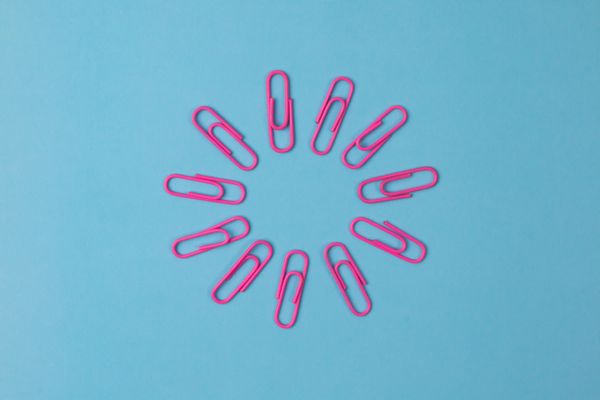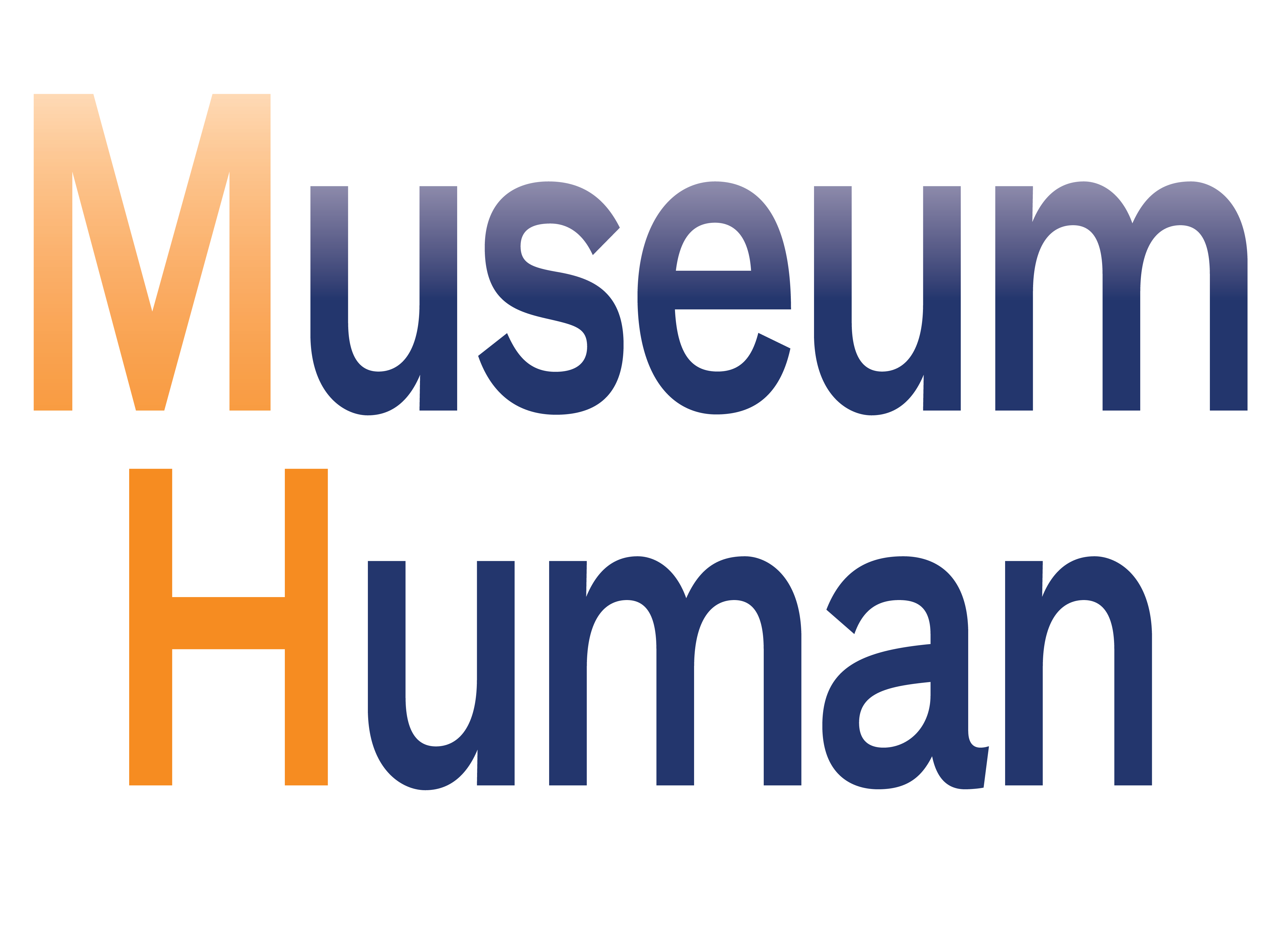
Museums are adopting an attitude of relentless cautious optimism to mask uncertainty and paradox.
If you're reading this and not a subscriber to Museum Human, consider scrolling to the bottom and signing up now—it's free and is the only way to read the site's longer weekly post on the organizational culture of cultural organizations.
My favorite org culture podcast, Brave New Work (led by The Ready's Aaron Dignan and Rodney Evans) had a terrific episode this week. Titled "Can hybrid work…work?" (on Spotify here and Apple podcasts here), the podcast mixed equal parts of their consultancy's own experiences with remote work and no-bs dissection of how institutional leaders are generally plowing through worker anxiety and pandemic revelations to restore some sense of normalcy to their organizations (you should read Jessica Wildfire, my new favorite writer on Medium).
(An aside: I went through a period a few years ago of desperately trying to bring org culture consultancies and museum people together. The problem wasn't the people as much as the structure of museums which make them less amenable to organizational experimentation outside of digital departments which had reasons to try Agile workflows. My own position in my organization—not high on the formal chart and thus with less command over budgets and schedules—didn't help matters. I'm mentioning this here just to point out that these observations are just that. Org-culture-minded people in museums often have to work the margins and build constituencies on their own as they confront barriers and levels of difficulty akin to Dante's journey through the underworld.)
Anyway, I digress. In the Brave New Work podcast episode, Evans pointed out that a lot of organizational leaders have drawn a Labor Day line in their institutional sand as the point at which managers and workers needed to have their schedules established. (Even while a few are all in on remote work.) But all this was doing, she posited, was to give workers a "find your new gig by Labor Day" deadline. Workers, she said, were not keen to ignore their lived experience of the past year-plus; they wanted recognition for what they had accomplished and figured out, and if their organization wouldn't grant it, they would chart their own career doing so.
This is the "great resignation" you may have been reading about. Since you're reading Museum Human, it's easy to wonder if this holds true for museums—which took the choice out of plenty of our hands through layoffs. What is the mobility factor in this field? Anecdatally, I know plenty of museum folks who have switched institutions or are now (I won't say decided to go, considering how many did so involuntarily) freelancers and consultants. These kinds of disruptions can be messing with the classic idea of museum careers. Is this new layer of rovers a positive for the field or is the leadership (and rainmaking with rich donors) obsession holding the sector back?
The podcast pointed out, as many other places have noted, that workers who are not managers are likely going back to workplaces somewhat grudgingly. (But were workers going into offices grudgingly anyway?) Many workplaces in the US are squeamish about requiring proof of vaccination or mandating social distancing or acknowledging the uncertainty of variants. Managers believe workers need to be back—I've gone over the reasons why managers and leaders think this (also here)—which really says something about how managers evaluate their own importance and how to reward their more visible workers. But if leaders backed off a bit, the natural desire of many workers to be back at least a little might help the organization in the long run.
Dignan, in the podcast, mentioned that even pre-pandemic, when The Ready would work with clients, "having 30 people in the room and five people on Zoom sucks." Meaning, hybrid is already difficult; we know that. "So tell us when you'll have everyone in one place." The answer isn't demanding everyone be in the office—just that as close as possible to everyone being in the office at certain select times. Dignan isn't hesitant about hybrid as a long-term future, but organizations can't keep claiming "we'll figure it out" and use that as a "get out of jail" card when leaders are scheming on how to make everyone return. Are they sabotaging their own organizations? Investments in hybrid tech would say no, but the clunky control-oriented steps would say yes. Again, workers have already designed hybrid museum workplaces—leaders should learn from their staff.
Evans said that she didn't think that the "randomness," meaning all workers deciding (whether on the spot or planned) on their own schedules, will work; what Dignan called the "office as a WeWork model." Evans said that this kind of "hoteling and hot-desking" (meaning, no permanent desks) was a 20-year-old model for saving money on real estate, not a real hybrid workplace. Now I've mentioned hot-desking as an organizational idea for museums, but I was more interested in the mixing and sharing of roles and some internal competition. She wants team-level agreements and some team-of-team level agreements, such as "the third Wednesday of the month we'll gather discuss departmental governance," where substantial internal business is decided, with accommodations only for people who really could not make the trip—perhaps they would only be in the office for crucial annual events.
She paraphrased a previous podcast guest, Ted Rau of Sociocracy for All: "It is very easy to mistake your own range of tolerance for actual quality." That is, people project their preferences for universality, such as leaders believing that there's no creativity possible when everyone is working remotely. Evans pointed out, and this is really important, that this depends on your neural orientation, that creativity takes many different forms. There are people who need to be in an office, there are people who need to be in a dark room (as Dignan said, these models optimize for extraverts; even for them, returning to super-social offices will be a challenge). Museum leaders are declaring, this is the right way.
Seriously, if you're reading MH, you're a good audience for the Brave New Work podcast. Maybe we can build an increased knowledge of org culture for museum work together!
I included some links in the text above, but here are a few more on the current state of hybridity. This Harvard Business Review article has a good rundown of organizational imperatives for virtual work:
- The Virtual World Does Not Treat Roles and Tasks Equally—unfair and arbitrary distribution of technology (and, I would say, knowledge, training, and accommodation) can lead to the perception that some virtual workers are better than others.
- Nuances Matter in People Management—leaders and managers need (why not everyone?) to be more skilled at listening and communication in hybrid environments, and organizations need to provide opportunities for workers to be in the loop but also time and space to be left alone.
- Strong Central Guidance Is a Must—speaking of paradox, this is where leaders have to provide an overall theme to the work, to maintain the sense of mission, but in a way that respects a flatter hierarchy. But note this leader-centric warning:
All this sounds good and democratic. But companies now need to ensure that this transformation produces higher performance, not chaos. One leader reflected, “You must think how you get the whole organization to react correctly to the situation and how you must lead different groups. There has to be structure behind all these actions, and you have to be able to look close and far simultaneously.”
Enabling more local responsiveness and initiative only works if organization has a clear and shared vision, effective performance measurement systems, and regular follow-up. Over the next year, leadership teams should spend significant time fine tuning — and strengthening — these integrative mechanisms for their new hybrid mode, so that local flexibility segues from being a necessary response to the crisis into a longer-term advantage.
- Even in Hybrid Model, You Still Have to Ensure Your Processes Are Crisis-Proof—organizations can't wait to plan for the next crisis, they need to devote time, money, people, and resources now for the unsexy things like cataloging, maintenance, and learning.
Workers need more than just pats on the head. They need to reap the organizational rewards of their hard work in order to process the trauma of the past year.
I linked above to this article from MIT's Sloan Review about social capital, how workers gain influence from their relationships, but it's worth quoting at length here since it may be paywalled:
Established social capital made it relatively easy to shift to remote work without losing a sense of the larger organizational context. But over time, organizations shift in the way they function — even ones where many employees are working remotely — as the economic situation evolves and teams are disbanded and reformed to address changing competitive landscapes. …
An unfortunate side effect of persistent remote work during the pandemic has been that social capital networks within organizations have weakened, making it harder for people to maintain the same high level of productivity. Concern about this phenomenon was voiced early on, in May 2020, by Microsoft CEO Satya Nadella, who noted that people had been very productive initially following the quick shift to remote work but that “maybe we are burning some of the social capital we built up [while not working remotely] in this phase where we are all working remote.” What we saw collectively in the following months of last year and continuing into this year is that the social capital depletion was and is real."
Now if this sounds like the whole "weak-ties-water-cooler" thing, it sort of is, but it's getting a little deeper into the real and cumulative effects of pandemic fatigue, combined with uncertainty over the Labor Day have-school-and-caregiving-and-work-schedules-figured-out thing. Can we so easily dismiss the creativity-in-the-hallway idea (I know I've done so) while also claiming that there's nothing to diminishing productivity returns? A final point from the article:
… as their time out of the office lengthened, team members began to feel more isolated and realized that interacting with coworkers they were only acquainted with was something they missed. Formal meetings didn’t provide the same type of connection, context, or understanding of what was happening in the organization that the hallway conversations in between in-person meetings had provided.
For those of us, like me, who don't always have clear team relationships, where we have to make sure we're kept in the loop, we should ask ourselves—did we feel like we knew more about our organization's work and culture in the before times? If there have been positives to the necessary growth of virtual teams, has this come at the expense of new people, who "don't know what they don't know"? Just because I'm a strong advocate of whatever-work-structure-works doesn't mean I'm ignoring the challenges.
I'll end with these few links about the gendered nature of the return to the office, how remote work can threaten the tech titans, and Cal Newport's latest remote-work writing in the New Yorker.
Enjoy the links and tune in next week!
If you're reading this and not a subscriber to Museum Human, consider signing up for a free subscription below—it's the only way to read the site's longer weekly post on the organizational culture of cultural organizations. Thank you for reading!
cover image by Tamanna Rumee on Unsplash [description: a circle of paper clips on a blue background]

Links of the Week: July 15, 2021: Paradoxes All the Way Down by Robert J Weisberg is licensed under a Creative Commons Attribution-NonCommercial-ShareAlike 4.0 International License.






